
Djamila Knopf’s website has a page of FAQs. One of the questions the German illustrator gets frequently asked is this: can you give me career advice?
“If you’re an artist wanting to become a professional,” she writes in response, “I can give you the following three pieces of advice: 1) Work on your craft 2) Don’t try to force yourself into a style that isn’t natural to you and 3) Share your work on social media.”
Good advice. It’s solid, precise and applicable to pretty much any line of work – artistic or otherwise. But these three seemingly simple points come from years of trial and error. It’s hard-won advice.
Not that long ago, it looked like Djamila was going to quit working on her own craft. Then, when she did commit to art, she tried to force herself into a style that wasn’t natural. Her work became a big success on social media, but only after practising it in secret because the people she initially shared her work with said it wasn’t proper art. Behind each piece of Djamila’s advice there’s a story.
WORK ON YOUR CRAFT
Djamila doesn’t speak publicly about her childhood, except to say it was “the kind of upbringing I wouldn’t wish on anyone.” A couple of things got her through it: one was visiting her grandparents, making fishing poles, bows and arrows, running about their garden and exploring the surrounding forests, canals and fields. The other was a group of animated TV shows that looked a little different, and told stories about heroines and magic.
Diese Geschichte stammt aus der January 2020-Ausgabe von ImagineFX.
Starten Sie Ihre 7-tägige kostenlose Testversion von Magzter GOLD, um auf Tausende kuratierte Premium-Storys sowie über 8.000 Zeitschriften und Zeitungen zuzugreifen.
Bereits Abonnent ? Anmelden
Diese Geschichte stammt aus der January 2020-Ausgabe von ImagineFX.
Starten Sie Ihre 7-tägige kostenlose Testversion von Magzter GOLD, um auf Tausende kuratierte Premium-Storys sowie über 8.000 Zeitschriften und Zeitungen zuzugreifen.
Bereits Abonnent? Anmelden

XPPen Artist Pro 19 (Gen 2)
Whether you’re a pro artist or a passionate hobbyist, this pen display offers something for everyone with beautiful colour and accurate drawing
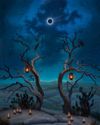
First Impressions
The artists explains how her imagination for fantasy was born
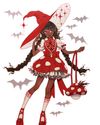
DRAW VIBRANT CHARACTER ART
LIDIA CAMBON reveals her step-by-step process for creating a full-body illustration from first sketch to vibrant, cohesive colour with markers
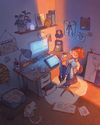
Photoshop & Blender: BUILD NARRATIVE USING INTERIORS
Find out how illustrator Magdalina Dianova creates a cosy setting that helps to express her character’s personality
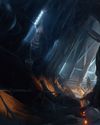
Blender, Procreate & Photoshop DESIGN CREEPY ARCHITECTURE
Nick Stath explains how he built an eerie, atmospheric environment for the sci-fi horrors of Alien: Romulus
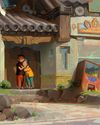
Photoshop - PAINT FAN ART WITH EMOTION
Baptiste Boutié goes in-depth on his approach for creating visual appeal in a tribute to Tekkonkinkreet

ZBrush, KeyShot & Photoshop - CRAFT A HIDEOUS ALIEN NIGHTMARE
Follow along as character and creature artist Kyle Brown makes xenomorph fan art inspired by Alien: Romulus

FEARFUL VISIONS
ImagineFX explores the visual heritage of the visceral Alien cosmos and its develooment over the franchise's history

Mike Butkus
Surf's up! Why coastal comforts lured the artist to his California home

The art behind Alien: Romulus
Xenomorphology Tanya Combrinck meets the Alien-obsessed concept artists who revived the visual style of the classic films